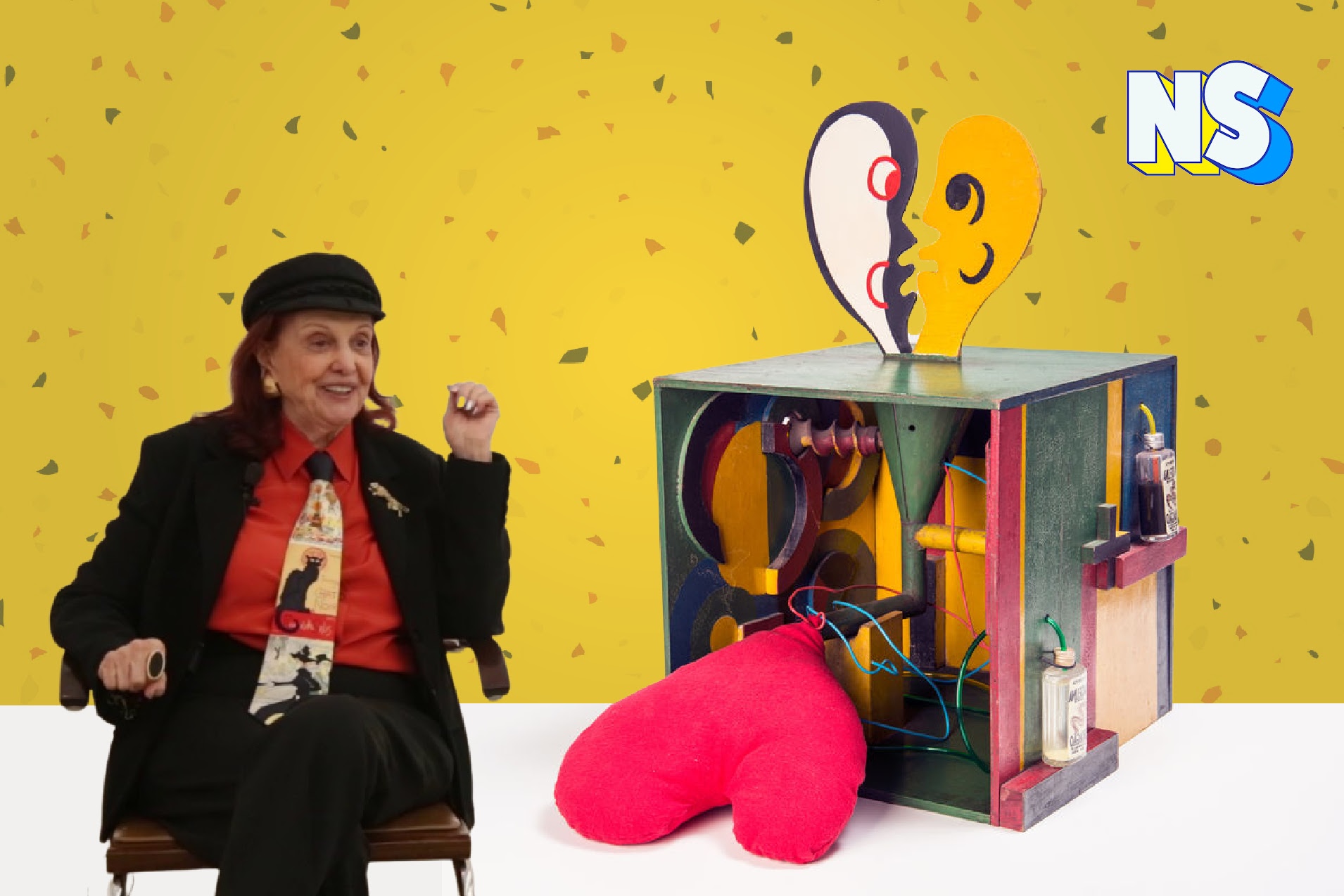Credit: Lorin Granger/HLS Staff Photographer
In the late 1960s, Brazilian artist Teresinha Soares smashed norms and put gender issues and the rights and sexual freedom of women in her art.
She was one of the first Latin American female artists to do so.
Through the feminine and the erotic, Soares upheld women’s liberation and also criticized the Brazilian military dictatorship and the oppression of a patriarchal society.
For Teresinha Soares, the female subject is her vocabulary
“The woman has to have pleasure, desire, without crime and without punishment. To have the courage to show herself, to feel up to a man, to question—including her erogenous zones—to emancipation, pleasure, encounter. This is all present in my work,” she once said.
Teresinha Soares was born in Araxá, Minas Gerais, Brazil, in 1927, in a conservative and Catholic nation where women had little voice.
Some of the tendencies of the 1960s influenced her art — such as global pop art, the nouveau réalisme, and the new Brazilian objectivity. It spoke about women through domestic issues, female body cycles, sexuality, maternity, victimization, and inequality.
Soares also explored how politics affected the female — especially during the Brazilian military dictatorship from 1964 to 1985. He felt that man was a political animal and that politics influenced our lives, home, friends, and work.
Her Caixa de Fazer Amor (Lovemaking Box) 1967 celebrates the erotic and the political in a work of art in pop colors and reminiscent of American artist Andy Warhol.
“Oh, my Lovemaking box… I still have fun with it. It started as a joke,” Teresinha Soares said in an interview about an exhibit in a Brazilian museum.
“I bought a tico-tico machine, wood, and I built it without any experience in joinery. It shows two faces that can be two beings almost kissing. Both go through a grinding machine, and, out of it, a big red heart emerges,” she said. “Love is beautiful!”
The box contains two hearts — a large plush one inside the box and a second, split in half (but with the potential to be joined) on the upper part of the box and forms by two faces that look to engage, almost touching each other.
Initially, the observer could interact with the art by turning a handle connected to a windmill that would set the plush heart in motion — imitating the beating of a person's heart in love.
Soares' work is whimsical and, at least to this writer, illustrates the comedy and the tribulations of falling in love.
“My art has always been this way, corporeal,” Soares said in the interview. “It is as if I were born as if I had given birth. It came to me as a cry. It was an organic need to jump, show, speak, and fight for what I thought was right. It was a very intimate thing; I was very attached to art.”
Teresinha Soares is still alive and working in Belo Horizonte, Brazil. One of our great living artists, not to be missed.
https://draft.nuestrostories.com//wp-content/uploads/2022/06/Susanne-182x250.jpeg





